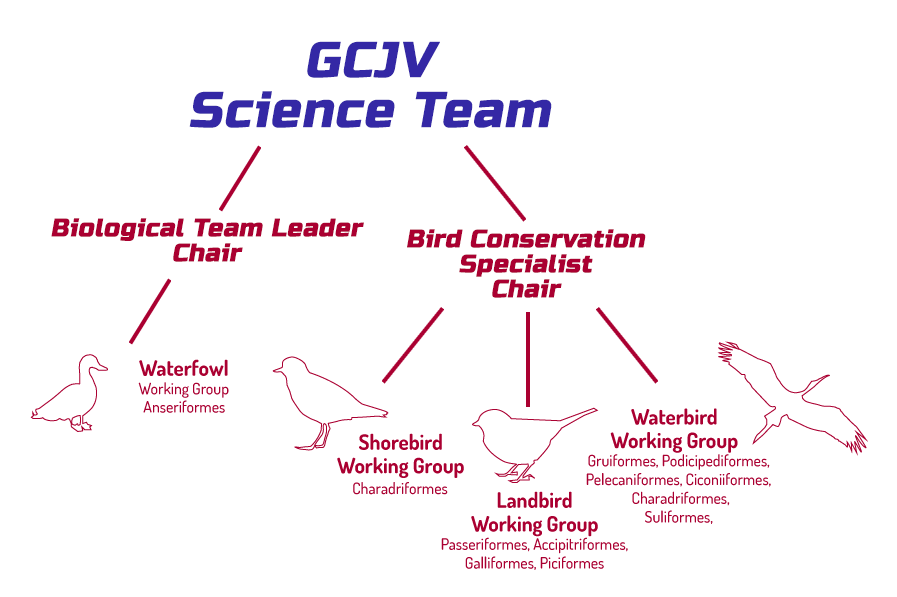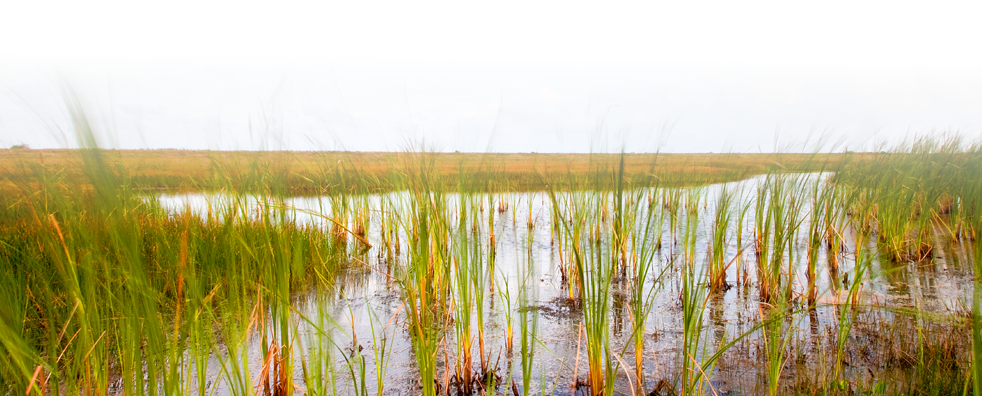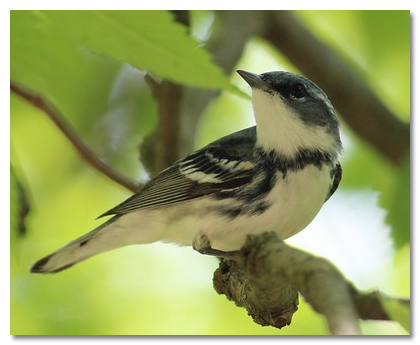
Biological planning for bird habitat conservation in the GCJV area is typically led by GCJV Office staff, aided by other members of the GCJV Science Team and other partners. The Science Team maintains the integrity of the biological foundations of regional bird conservation plans endorsed by the GCJV Management Board, reviews habitat conservation proposals for consistency with regional bird conservation plans, and provides technical guidance regarding habitat and population monitoring.
The Science Team comprises four working groups: Waterfowl, Landbird, Shorebird, and Waterbird. Figure 1 shows the relationships between the working groups and GCJV staff. The GCJV Biological Team Leader (BTL) serves as the current Chairperson for the Waterfowl Working Group. The Bird Conservation Specialist (BCS) also serves as the current Chairperson for the other working groups. Science Team working groups generally consist of habitat management-oriented migratory bird scientists with international, national, or regional recognition in one or more subject areas of significance to the Gulf Coast.
Target species or species-groups
Priority species are selected on the basis of their conservation need as determined in the respective national and regional bird conservation plans (North American Waterfowl Management Plan, North American Landbird Conservation Plan, U.S. Shorebird Conservation Plan, and North American Waterbird Conservation Plan, National Bobwhite Conservation Initiative) the relative importance of Gulf Coast habitats in relation to the species' total range, the ability to enact meaningful conservation actions in the GCJV area to influence the species populations, and other factors, including economic or cultural importance, and the extent of existing programs developed to address the species' conservation.

Science Team working groups employ the following steps in biological planning for bird habitat conservation along the Gulf Coast:
Determine limiting factors
GCJV target species are listed here.The Science Team working groups analyze and determine the most significant factors causing priority bird species population declines, or limiting attainment of desired population objective levels or rates.
Develop strategies to mitigate limiting factors.
Once the main factor or factors restricting attainment of population objectives for a priority species or species-group are identified, Science Team working groups determine the most appropriate measures needed to offset the limiting factor(s).Quantify objectives with biological models
In order to begin the process of estimating and refining how much, what kind, and where habitat is needed to achieve priority bird species population objectives, models are constructed to describe what is known about the relationship between bird species and habitats, and to depict expected population response to changes in habitat variables. Models may be based upon existing data, expert opinion, or a combination of both.Identify testable assumptions
Constructing models of habitat-population relationships typically elucidates data shortcomings and/or sensitive model parameters. These uncertainties range from extremely specific, such as density of prey species per habitat unit, to broad, such as the basic winter ecology of certain migratory landbird species. Bird habitat conservation efforts must advance in the face of incomplete knowledge. It is the duty of the Science Team, therefore, to identify the most important assumptions underlying species-habitat relationship models and proposed conservation actions, so that those assumptions can be tested through dedicated research by universities and GCJV partner agencies and organizations.
 700 Cajundome Blvd.
700 Cajundome Blvd.Lafayette, LA 70506
Phone: 337-262-7001 Fax: 337-262-7000
Copyright 2020 Gulf Coast Joint Venture - Webmaster
